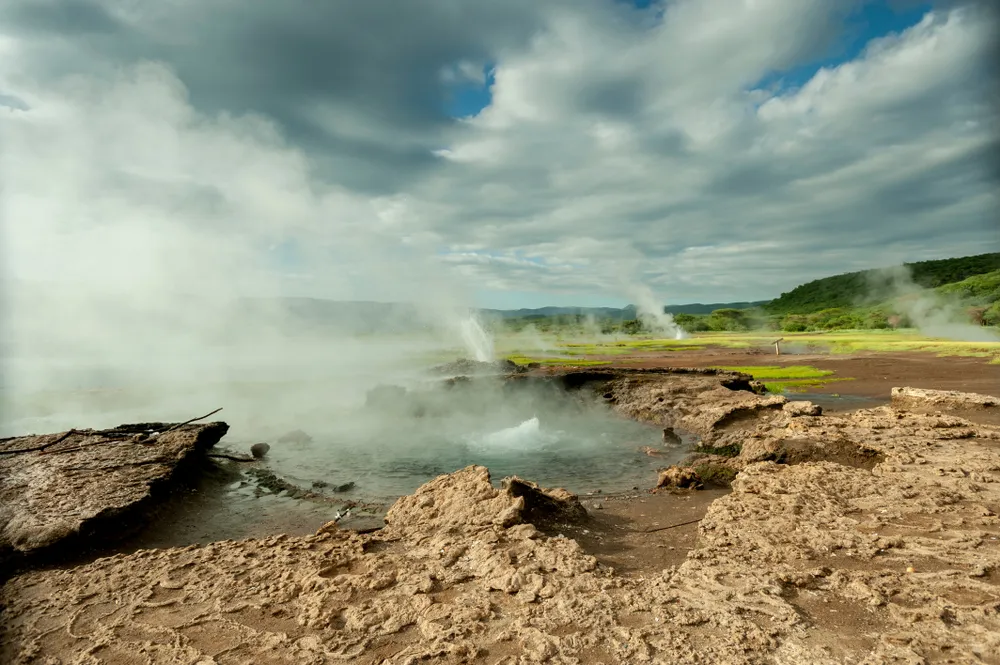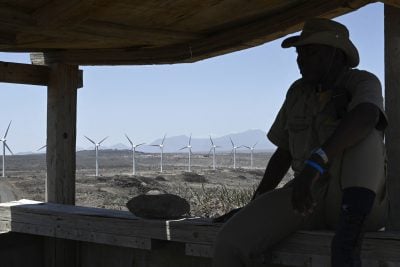Geothermal energy is a fundamental resource which is at the centre of Kenya’s energy policy and East Africa’s energy transition.
Geothermal energy uses heat from reservoirs of hot water below the Earth’s surface to generate electricity. To extract it, wells are drilled into underground reservoirs to tap steam and hot water which is brought to the surface and goes into a turbine to make electricity.
Having gained experience in the home market – which, sitting atop the Great African Rift, is blessed with geothermal resources – Kenyan firms are now being enlisted for geothermal energy projects throughout the region.
At the end of November, Kenya Electricity Generating Company (KenGen) started drilling geothermal wells in Djibouti in a bid to reduce the country’s dependence on imported electricity and fuels and meet the increasing demand for energy from large-scale developments including urban, port and industrial infrastructure.
For Djibouti, devoid of fossil resources, power generation is an issue of economic and social development, but also a matter of national sovereignty in an unstable region. Following Kenya’s lead, Djibouti has established the ODDEG (Djiboutian Office of Geothermal Energy Development), whose mandate includes removing upfront costs and reducing risks for infrastructure, surface exploration and drilling as well as promoting direct uses of geothermal energy and developing skilled labour.
Djibouti has geothermal reserves of 500-1000 MW, according to ODDEG, roughly the equivalent of what Kenya injects into its national grid each year from geothermal power.

Geothermal’s rise
Until now, geothermal technology has received less attention than other technologies at the forefront of the global energy transition, including solar and wind power.
Italy was the first country to generate electrical power from geothermal energy in 1904 and in Africa, geothermal explorations began in Uganda and Kenya in the 1950s. But the potential of geothermal energy was long neglected due to its relatively high cost compared to other available energy sources, the persistence of fossil fuel development, and because it only occurs in specific locations.
However, the Cop26 conference in Glasgow in November 2021 has led to a renewed focus on the transition to clean energy and the importance of using all available sources of energy to move away from fossil fuels as quickly as possible. Proponents say that geothermal technology has several major advantages.
Unlike wind or solar, geothermal power plants produce power consistently, regardless of weather conditions and even well into the night, says Paul Brophy, president and principal geologist of EGS, a development and exploration company.
Critics point to the impact of noise pollution on conservation tourism, the potential of projects to unleash local seismic activity including earthquakes, and the necessity of clearing vast areas of land for development – in Kenya, pastoral Maasai communities have been displaced by the expansion of the giant Olkaria project.
Still, Kenya, the region’s largest generator of electricity, has moved quickly to establish itself as the world’s seventh largest producer of geothermal energy. Through KenGen, which produces 85% of the country’s geothermal energy, the country now has an installed capacity of 823 MW, compared to the 2,555 MW of the industry leader, the US. Kenya relies on geothermal steam for 38% of its power, according to the BBC.
When the current 86 MW expansion at Olkaria is complete, the overall project will have a capacity of 791.5 MW, enabling it to produce about 27% of Kenya’s energy.
Creating an enabling environment
The focus on geothermal is part of Kenya’s wider push in renewables, which also embrace hydroelectricity and solar and now account for more than 90% of its energy.
The country’s success can partly be explained by the fact that it took advantage of its geographical location on the eastern branch of the Great Rift. Yet even with an advantageous location, there is a substantial risk in timing and cost associated with the early phases of geothermal development.
“It takes five years to build a geothermal power plant, each well costs $5m and finding reserves is a risky bet in the sense that results are not always guaranteed,” says Brophy.
In a bid to make this challenging environment more attractive to explorers, Kenya has improved its geothermal energy application system and created enabling conditions for geothermal energy development. Kenya used public finance to attract private investment in geothermal, explains Ralph Nyakabwa-Atwoki, a geothermal expert and technical director at Sustenersol Uganda.
A strong institutional framework for the energy sector is another essential element that led to a successful development of geothermal energy in Kenya, he says. The Geothermal Development Company (GDC) was established by the Kenyan government in 2008 specifically to undertake the exploration and development of geothermal resources, leaving geothermal power generation to KenGen.
By carrying out the initial phases of projects, GDC assumes the initial exploration and development risks which open the prospect of public and private participation in later stages of geothermal development. Through its state-owned corporation, the Kenyan government absorbs some of the upfront risk and finances the exploration phase to then allow the exploitation of steam reserves by private companies.
Regional customers
The regional market for geothermal and other renewable energy sources remains vast. East Africa has one of the lowest electrification rates in the world, with less than a quarter of the population having access to electricity. Driven by strong partnerships, East African countries are substantially increasing the share of renewables in their electricity production.
Still, due to the length of the project development cycle and development costs, geothermal energy is not likely to offer a quick fix to the region’s power generation problems, but it can be part of a long-term generation strategy.
While Kenya is the African leader, the same geological features exist in other countries along the Great Rift. Ethiopia has made heavy investments to explore geothermal energy and KenGen, as part of its expansion plan, has secured two drilling contracts there. KenGen already operates 22 wells in Ethiopia alongside its Djibouti efforts.
Several countries in the region show interest in geothermal energy but for most, the technical and institutional capacity to implement geothermal energy development projects remains insufficient, as does the political will to enable a major policy shift.
With its supportive policies and institutions, and the successful generation of power at home, Kenya could play an increasingly prominent role in the regional geothermal sector.
Want to continue reading? Subscribe today.
You've read all your free articles for this month! Subscribe now to enjoy full access to our content.
Digital Monthly
£8.00 / month
Receive full unlimited access to our articles, opinions, podcasts and more.
Digital Yearly
£70.00 / year
Our best value offer - save £26 and gain access to all of our digital content for an entire year!
 Sign in with Google
Sign in with Google 



